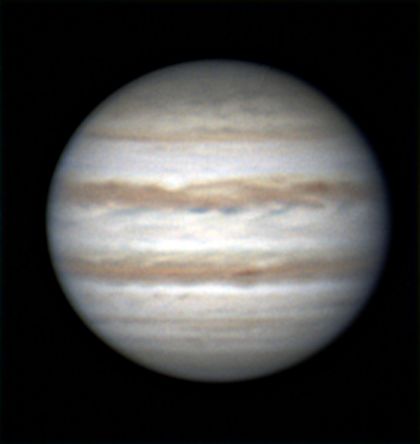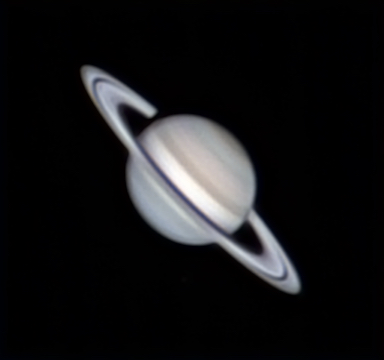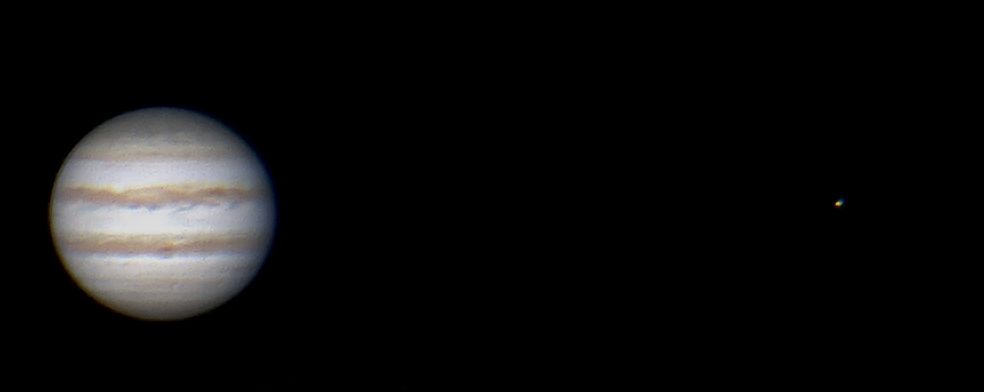Tonight's stargazing experience was a pleasant change from the cloudy nights that have plagued me throughout September. It often felt like the skies were conspiring against me, especially since I typically observe the heavens on Fridays and Saturdays, allowing me to stay up late without worrying about work the next day. There were instances when Thursdays seemed crystal clear, only for the following Friday to bring unexpected clouds right after I finished aligning my equipment.
However, tonight was different. The sky remained cloudless all evening, granting me excellent visibility as I captured images of celestial objects, including planets. I even managed to snap a quick shot of the

Helix Nebula (NGC 7293) despite the Moon's interference. Surprisingly this object is a lot fainter than I thought it would be for its size. I had to use a UHC filter to really get anything out of it. With some adjustments to the histogram in SharpCap, I salvaged enough detail to log my observation.
Next on the list while I waited for Neptune to rise over my house I decided to spend some time at the Lagoon Nebula (M8).

I've visited this object several times over the past few months but I think this time was the best capture so far and the Moon was right there in this part of the sky taunting me to give up. I learned a couple of things recently in a Astronomy Magazine article regarding bias frames where they mentioned some offset settings I have been ignoring in SharpCap. Basically you set your offset, in my case the white balance so that the histogram spike moves away from the left hand side of the graph. That, along with the fact I am getting much better at collimating I think made this capture stand out from my past endeavors.
I also stumbled upon a previously unknown (to me) object called the Little Ghost Nebula (NGC 6369)

, which piqued my interest due to its proximity to October and my enthusiasm for Halloween (I've already set up my decorations). I used a UHC filter in the hopes of capturing its colors, but I only managed to capture the white object with a center star and faint nebulosity around its "disk." Given my local sky conditions, I was content with the result. I love tiny planetary nebulae and will probably dedicate a page to them soon.
To conclude the night, I turned my attention southward and took a few frames of Saturn and Jupiter. However, my primary goal was to get a better view of Neptune.

Unfortunately, I struggled to center it in the small sensor of the ASI120 camera. It was much easier when I used my 294 camera in a previous attempt to capture Neptune. Although I did obtain some frames, I realized I need to research techniques for capturing Neptune, as I wasn't satisfied with the results. While I understand that I won't achieve detailed images with my current setup, I'm unsure about the optimal frame rates and histogram settings for this distant planet. I was averaging around 2 to 7 frames per second (fps), and I'm uncertain if this is normal.
As for Jupiter

and Saturn, the seeing was really nice and steady. This has been the first night where I had a pretty decent and calm atmosphere to practice grabbing these planets since I started taking pictures with this setup. Saturn

looked great even in the live view so I knew I was going to get a really nice picture. I think I am getting better at focusing the planets now that I've had a few months to practice. My only weakness is in the processing. I just really don't know what I am doing and either over do it or don't do it enough.
I really like this shot of Jupiter and Io. I am trying to figure out how to take pictures of Jupiter and Saturn with their moons. I learned that a lot of people actually fake it and composite two shots together, one of the planet with a different processed image of the moons but I don't like that idea. My only concern is the file size of the ROI I would have to use to capture the moons. They are usually a lot more spread out than what you see displayed in planetarium software.

Although I was hoping to add M45 and M77 to my Messier list this evening, I was pretty satisfied with my session tonight. I think I will wait for next month when those two objects show up a little earlier in my sky. I just don't have it in me to stay up past midnight in the dew these days. Sure I could remote into my scope from inside my house but that doesn't feel like observing to me.
I think it's time for some visual observing next so hopefully next weekend I will get another clear night.